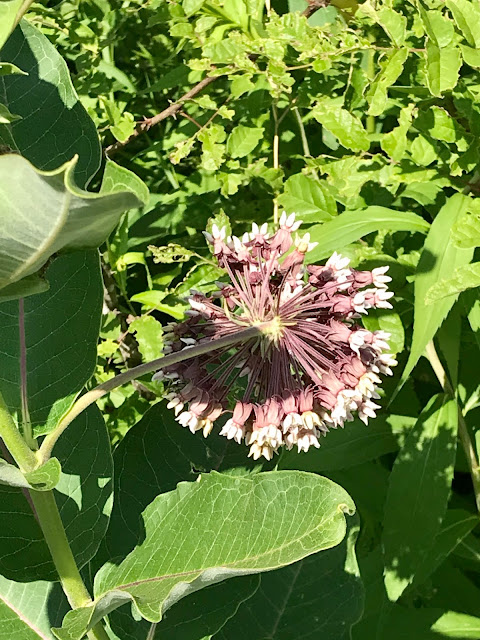Common Milkweed is a native, perennial wildflower. It can grow up to five feet tall. It bears cream-colored, pink-tinged flowers, 1/2 inch wide, that form round clusters up to two inches wide. Each flower has five downward-pointing petals and a five-part pointed crown. It has large, toothless leaves that are four to six inches long and bleed a milky sap when torn. Within its range it can be found in a broad array of habitats from croplands to pastures, roadsides, ditches and old fields. It is surprisingly rare in prairies in the Midwest, being found mostly in disturbed sites due to its inability to compete with other vegetation.
In Wisconsin alone, there are twelve native species of milkweed, and while they differ in form and habitat preference, they all play a critical ecological role as host plants for monarch butterfly caterpillars. Monarchs lay their eggs exclusively on milkweed species, and the emerging caterpillars depend entirely on the plant for nourishment. As they consume the leaves, they ingest natural toxins that deter most predators—an elegant defense mechanism passed from plant to insect. This specialized relationship makes every milkweed planting an act of conservation, supporting monarch populations that are increasingly threatened by habitat loss and environmental changes. (July)
